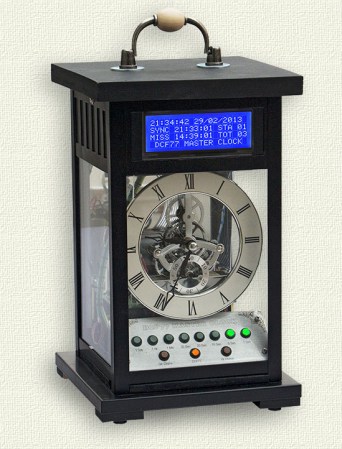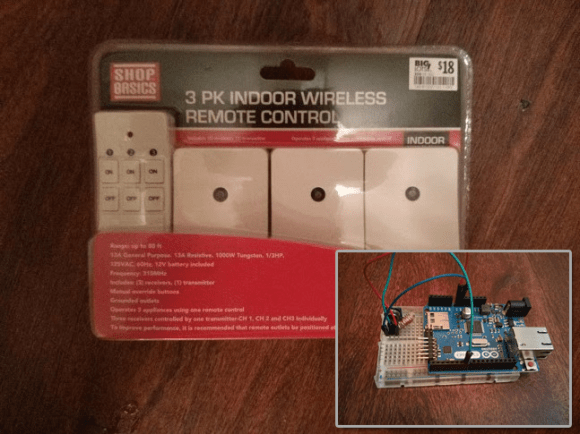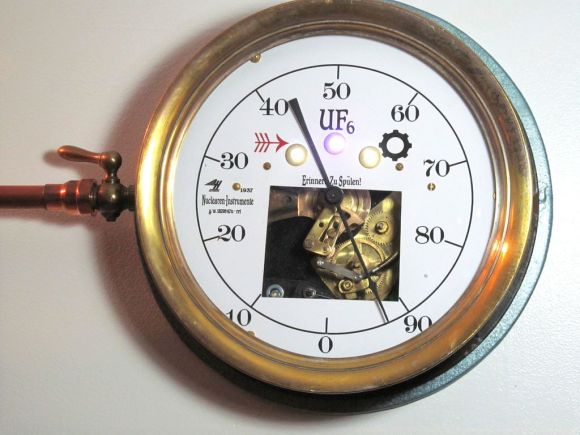[Brett] just completed his DCF77 Master Bracket Clock, intended to be a backup to an old logic controlled clock he made. For our readers that don’t know, DCF77 is a German longwave time signal whose transmitter is located near Frankfurt (Germany). Every minute, the current date and time are sent on the 77.5kHz carrier signal.
The result, which you can see above, is made using an Ikea lantern, a skeleton clock, an ATmega328 (for Arduino compatibility), a voice recording playback IC (ISD1730), a cheap 20×4 LCD display, a DCF77 receiver module, and many LEDs. We’re pretty sure that it must have taken [Brett] quite a while to get such a nice looking clock. In case the clock loses power from the power supply, 3 AA cells provide battery backup. On the firmware side, making the platform Arduino-compatible allowed [Brett] to use its libraries so the coding was quickly done. Embedded after a break is a video of the final result.

















